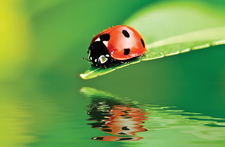Compress image files with Guetzli
Small Wonders

© Lead Image © Stuart Monk, Fotolia.com
The Guetzli image optimizer by Google developers produces smaller images than JPEG while maintaining the same quality, but it requires a powerful computer with a large working memory.
Images play an important role, especially on the Internet. Web hosting providers and users have a keen interest in efficient use of storage space and reduction of load times. With a need to budget its resources wisely, Google therefore set its developers the task of compressing image data.
The result is the Guetzli project – Guetzli being the name for a candy or cookie in the Alemannic German dialect. Under certain, frequently occurring conditions, Guetzli can reduce JPEG images by about a third compared with previous methods. Smaller file sizes then automatically result in quicker website load times.
The Chronicles of JPEG
For a long time, JPEG has been the trusted standard for image compression, but a closer look reveals that the algorithm sometimes produce rather unpleasant artifacts that are difficult to remove. Lossy algorithms remove details from images that are barely visible to the human eye to create larger uniform structures that can then be better compressed, whereas the lossless algorithms, such as JPEG2000 or JPEG-LS [1] generate larger image files. Some variants of Libjpeg [2] support the lossless method, so you should be able to use them under Linux with the appropriate software.
[...]
Buy this article as PDF
(incl. VAT)
Buy Linux Magazine
Subscribe to our Linux Newsletters
Find Linux and Open Source Jobs
Subscribe to our ADMIN Newsletters
Support Our Work
Linux Magazine content is made possible with support from readers like you. Please consider contributing when you’ve found an article to be beneficial.

News
-
Parrot OS Switches to KDE Plasma Desktop
Yet another distro is making the move to the KDE Plasma desktop.
-
TUXEDO Announces Gemini 17
TUXEDO Computers has released the fourth generation of its Gemini laptop with plenty of updates.
-
Two New Distros Adopt Enlightenment
MX Moksha and AV Linux 25 join ranks with Bodhi Linux and embrace the Enlightenment desktop.
-
Solus Linux 4.8 Removes Python 2
Solus Linux 4.8 has been released with the latest Linux kernel, updated desktops, and a key removal.
-
Zorin OS 18 Hits over a Million Downloads
If you doubt Linux isn't gaining popularity, you only have to look at Zorin OS's download numbers.
-
TUXEDO Computers Scraps Snapdragon X1E-Based Laptop
Due to issues with a Snapdragon CPU, TUXEDO Computers has cancelled its plans to release a laptop based on this elite hardware.
-
Debian Unleashes Debian Libre Live
Debian Libre Live keeps your machine free of proprietary software.
-
Valve Announces Pending Release of Steam Machine
Shout it to the heavens: Steam Machine, powered by Linux, is set to arrive in 2026.
-
Happy Birthday, ADMIN Magazine!
ADMIN is celebrating its 15th anniversary with issue #90.
-
Another Linux Malware Discovered
Russian hackers use Hyper-V to hide malware within Linux virtual machines.

